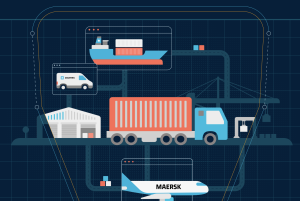Wayne Furness, Senior Vice-President Africa Region of end-to-end global logistics and supply chain management organisation UTi Worldwide, poses some questions on how effective organisational structure, end-to-end capabilities and appropriate measurement and reward systems, when applied to a logistics service provider (LSP) and client organisation, can make or break overall supply chain effectiveness.
“Supply chain efficiencies are, generally speaking, not being optimised to the extent that is necessary or achievable. South Africa and the world are under enormous pressure given the state of the world economy. South Africa’s logistics costs as a percentage of GDP do not stack-up well when compared with some of our key competing nations (that is, 14.5% – CSCMP State of Logistics Report, 2007).
“The acuteness of this problem is well demonstrated in the automotive industry where the Original Equipment Manufacturer (OEM) brands are actually competing with their sister plants overseas, let alone their traditional competitors. This is exacerbated by massive overcapacity in production plants around the world, with increasing pressure from trade unions for parent companies to bring the business back to countries where the brands originated. South Africa needs to demonstrate to the world that, on a sustainable basis, it is possible to manufacture and operate a business in an environment that commands a high level of quality and service delivery, at a competitive cost.
“In order to achieve this, supply chains need to be overhauled and then fine-tuned. Traditional views of cost reduction and supply chain enhancements need to be constantly challenged and improved – we need a 3-dimensional view, if you like – an added dimension or different way of viewing supply chain theory. The essence of this approach focuses on having a holistic view of the supply chains and appreciating how an action in one segment of a supply chain can influence a reaction (positive or negative) in another segment. Ultimately, we want the various segments or components to be synchronized and working in harmony with each other – where the whole is greater than the sum of the parts.
“One could liken the various components or segments of the supply chain to musical instruments in an orchestra. The instruments can be perfectly tuned, with world-class musicians playing them. However, if they are not reading from the same hymn sheet, with a conductor balancing the whole and bringing the right emphasis into play at the appropriate time, you could end up with a cats’ choir.
“An added dimension comes from throwing the importance of organisational structure into the mix (of both a LSP and the client organisation) together with end-to-end capabilities; collaboration and an effective measurement and reward system.
End-to-end capability
“Historically, LSPs tended to focus on one particular segment or function within the supply chain. A freight forwarder was a freight forwarder and tended to shy away from other disciplines which would not be regarded as a core competency. Contract logistics; materials handling; fine distribution; trucking and supply chain consulting are examples of disciplines that tended to have organisations providing specialist services within the appropriate segments of supply chains. More recently, organisations have begun developing end-to-end capabilities that have seen them moving up and downstream in the supply chain – with the goal of providing global integrated logistics.
“Does this fundamentally add a dimension that leads to a more efficient and cost-effective supply chain? Such end-to-end capabilities allow a LSP to better understand the workings of supply chains from a practical point of view and especially to appreciate how one segment being out of sync can impact the effectiveness of another. It also allows for greater co-operation between the different business units if they reside within the same company as opposed to traditional competitors. This is a key component to balancing one’s supply chain and moving towards a symphony. But, is it enough?
Organisational structure
“A few LSPs have overlaid a structure that pulls it all together. It is not enough to have end-to-end capabilities – one needs a conductor of the orchestra. However, organisations should be weary that such structures are difficult to implement. The success thereof depends to a large extent on the culture of the organisation and the willingness of the CEO to drive this as an important strategic imperative. Given the complexity of the structure and internal parochialism borne from traditional methods of measurement and reward, it also requires time for discussion and debate – something most organisations have little of.
Measurement and reward systems
“Show me how you measure me and I will show you how I perform…,” an adage that rings very true when it comes to organisational effectiveness. Perhaps the world would not be in its current economic mess if it weren’t for remuneration systems that offered massive reward for short term gain – exacerbated by very aggressive analysts on Wall Street and NASDAQ who tend not to look further than quarterly results. To what extent are organisations rewarding managers in such a way as to cause segments of supply chains to act at odds with each other? This can significantly impact the effectiveness of supply chains.
For more information contact Wayne Furness at wfurnace@uti.co.za


























